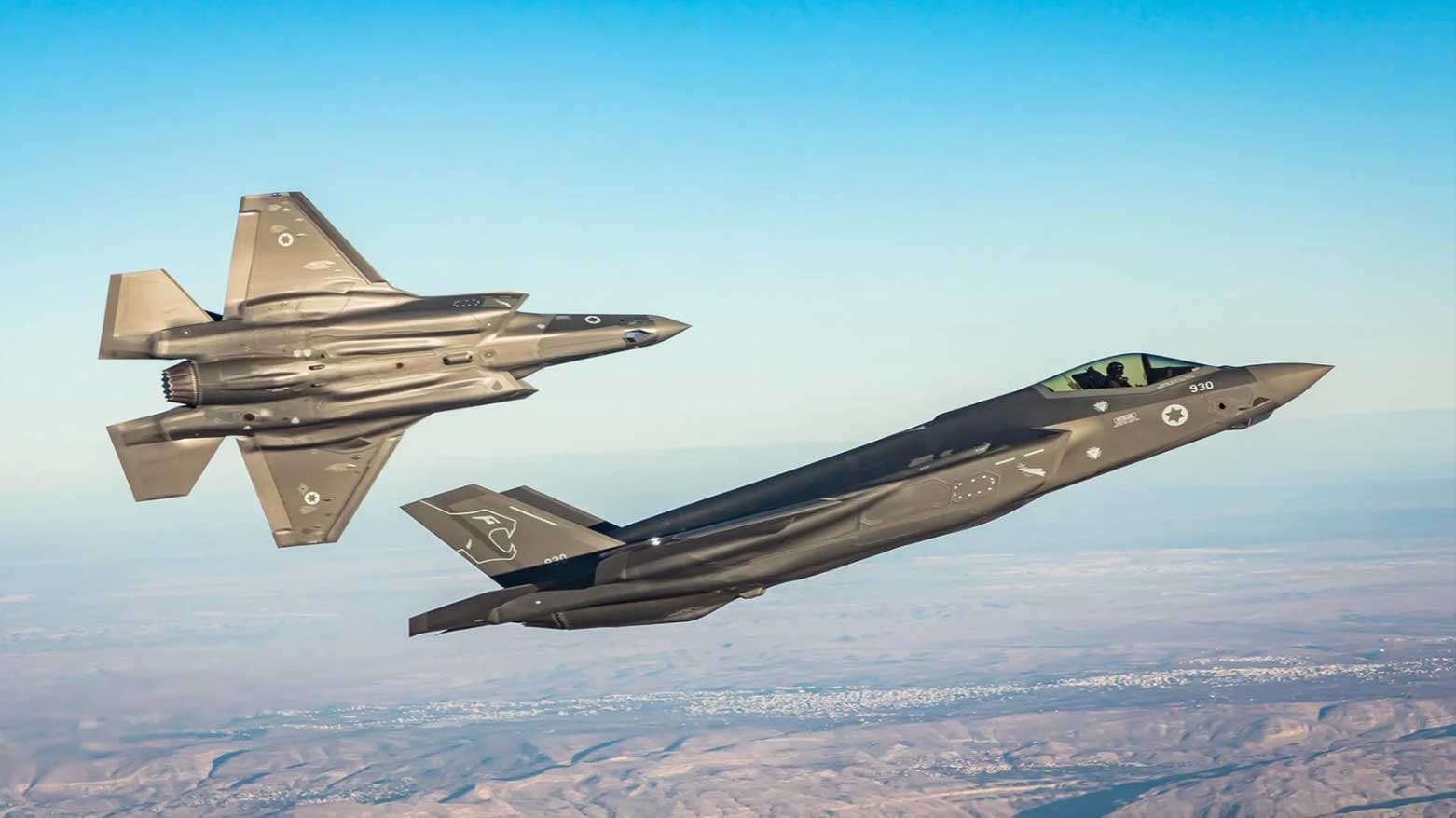Israel Simulates Air Strikes in Drills Amid Growing Tensions with Iran
Israel is reportedly weighing limited strikes on fortified sites like Natanz and Fordow. Such operations, if launched, would likely delay Iran’s program by months or even years.

ERBIL (Kurdistan24) — The Israeli Air Force on Monday launched extensive drills simulating missile and drone attacks on its own bases in a clear response to mounting tensions with Iran and fears of retaliation following potential Israeli strikes on Iranian nuclear facilities.
The exercises, reported by Israel’s Kann News, follow significant Iranian attacks in April and October 2024, which targeted key Israeli military installations. Israel’s maneuvers reflect a strategic preparation for potential escalation, as the region navigates the complexities of Iran’s nuclear program and evolving geopolitical dynamics.
The drills, which reportedly simulated strikes on air bases like Nevatim and Ramon—both previously targeted by Iran—focused on testing the resilience of Israel’s multilayered air defense systems and the command's readiness under sustained attack. While specific details remain scarce, military experts believe the simulations reflect critical lessons from past Iranian missile and drone campaigns.
Iran’s previous attacks, involving over 300 drones and ballistic missiles, were in retaliation for high-profile assassinations attributed to Israel—including the killing of two senior Iranian generals in Damascus and Hezbollah leader Hassan Nasrallah in Beirut. Though largely intercepted, those strikes exposed gaps in regional air defenses.
Israel views Iran’s nuclear trajectory as an existential threat. Despite Tehran’s insistence that its program is peaceful, the International Atomic Energy Agency (IAEA) has confirmed that Iran now possesses enough fissile material for multiple nuclear weapons. In response, Israel is reportedly weighing limited strikes on fortified sites like Natanz and Fordow. Such operations, if launched, would likely aim to delay Iran’s program by months or even years.
Central to Israel’s defense is its advanced, layered air defense system. The Arrow system, co-developed with the U.S., played a pivotal role in intercepting Iranian missiles in 2024, while David’s Sling and Iron Dome shield against short-range missiles and drones. These systems form one of the world’s most sophisticated aerial defense networks—but massed attacks, such as those executed by Iran using Shahed-series drones, continue to pose a serious challenge.
Iran’s arsenal includes the Fattah-1 hypersonic missile, Shahab-3, Kheibar Shekan, and thousands of Shahed-136 loitering drones. A recent CNN report noted China’s delivery of 1,000 tons of missile fuel components to Iran, enabling sustained production despite Israeli strikes on manufacturing sites.
The asymmetric nature of the conflict is apparent—Israel's billion-dollar defenses are being tested by relatively cheap and abundant Iranian drones. This dynamic, seen in other global conflicts like Russia’s war in Ukraine and Houthi attacks in the Gulf, underscores the difficulty of countering quantity with quality alone.
Meanwhile, U.S. support for Israel remains unwavering. Reports from Kann News and posts on X claim nine U.S. military transport planes delivered hundreds of bunker-buster bombs to Israel in April—potentially signaling preparedness for future action against hardened Iranian sites. Though unconfirmed, such support aligns with America’s historic security commitment to Israel.
Simultaneously, the U.S. is engaging Iran diplomatically. A second round of nuclear talks was held in Rome on Saturday. Iranian officials remain publicly skeptical, with Supreme Leader Ayatollah Ali Khamenei describing the talks as balanced between hope and distrust. Iran insists on preserving its missile capabilities and nuclear infrastructure—red lines that complicate any path to agreement.
Further raising concerns are Iran’s partnerships with Russia and China. Russian experts have reportedly assisted in missile development, and China’s material support continues despite international sanctions.
Regionally, Iran’s proxy network has been weakened. The fall of Syria’s Bashar al-Assad in late 2024 and Israel’s successful targeting of Hezbollah’s leadership have disrupted Iran’s weapons supply routes. However, Iran maintains influence through groups like the Houthis in Yemen, who have launched ballistic missiles at Israel as recently as March.
The Israeli Air Force’s Monday drills are not just tactical—they are psychological. By preparing for worst-case scenarios, Israel signals to Iran, its allies, and the world that it is ready for any escalation. At the same time, the drills aim to reassure an Israeli public living under frequent missile alerts that their military is taking proactive steps to defend the nation.
Yet the risks are undeniable. Striking Iran’s nuclear sites could ignite a broader regional war, with consequences stretching from energy markets to global security alliances. Past Israeli preemptive strikes—such as those on nuclear reactors in Iraq (1981) and Syria (2007)—were successful and contained. Iran, however, presents a more complex and formidable challenge.
Israel’s Monday drills are a stark reflection of a deeply unstable regional reality. As Iran's missile technology advances and diplomatic options narrow, Israel continues to rely on a mix of military deterrence and strategic signaling. Whether that balance will hold—or give way to open conflict—remains a critical question for the entire Middle East.
